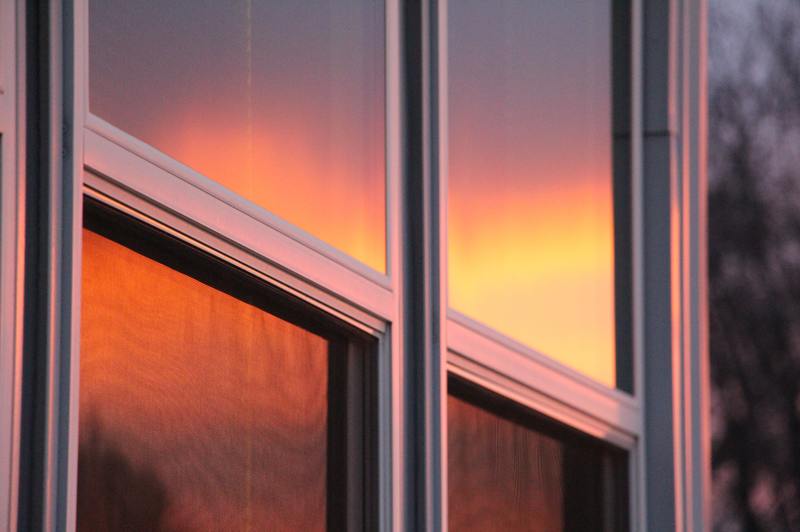Is water damaging your windows? Here’s how to resurface water damaged window seals so you can save them and avoid replacement.
When water damages the seals of your window, the paint may peel, deep cracks will occur, and the wood may rot. Cracks are not just eyesores; they allow deep seep of moisture and compromise wood’s integrity. You may think you might have to replace the window seals, but you can actually save them with just filler and epoxy sealer.

Fixing Water Damaged Window Seals
DIY may be a lot of work, but it is worth trying. If you are confident you can fix your window yourself, then why not? Here are what you need to do to resurface your water damaged window seals:
Step #1. Remove peeling paint
The first thing you need to do is scrape the paint off the damaged parts with a paint scraper. This will give you a clearer view of the damage and will also allow fixing easier.
Step #2. Get rid of rotten spots on the sill
Using a flathead screwdriver, chisel out the rotten wood parts. Make sure to remove all of them so there will be no decayed wood left after the repair.
Step #3. Sand the wood
With fine-grit sandpaper, smoothen out the wood by removing the left peeling paint and splinters. Make sure to remove all the damaged paint. Roughened it slightly so the new paint and epoxy will adhere well.
After sanding, wipe the sill with a damp cloth to remove sanding dust. This is essential to avoid residues on the finished look.
Step #4. Mix epoxy wood primer in a container
In a disposable container, pour an ample amount of epoxy wood primer and mix it. Please read the instructions and follow them carefully since they vary depending on the manufacturer. Usually, you will need an equal amount of activator and primer.
Step #5. Apply the epoxy primer to the window sill
When brushing the epoxy, use a narrow paintbrush. Apply an even and thin coat. Dry it for at least 10 minutes.
Step #6. Create a mixture of activator and epoxy filler
Mix equal amounts of activator and epoxy filler in a disposable container, and make sure to follow instructions carefully. Using a narrow putty knife, smoothen the filler over the window sill, making sure to force it deep into the cracks and gaps.
Scrape off the excess filler to make a smooth and level finish. Let the filler dry out and become hard.
Step #7. Sand the wood once again
Use fine-grit sandpaper and smoothen out the wood. Remove any irregularities in the epoxy filler. Then, get rid of the sanding dust by wiping them out with a damp cloth or rag.
Step #8. Prime and paint the window sill
Apply an oil-based primer on the sill. Then, brush two coats of exterior paint. Do not use interior paint as it can’t protect the wood from water damage.
All done! Your once rotten window seals are now looking fresh and new once again. The DIY wasn’t bad at all, right?
Is cold air getting in the broken window seals?
Sad to say, but yes. However, a minor crack in the seal will not make cold air and rain come pouring inside your house. The seals are still pretty functional but just compromise the thermal insulation efficiency.
Broken window seals also increase your energy bill. This is because the glass struggles in keeping either the warm air from your heater or the cold air from your air conditioning unit during summer.
Weatherproofing your windows
Are your windows old and leaky, or do you just want to protect them from water damage and other types of damage? Maybe it’s time that you weatherproof them.
To fix leaks, you can use a sealant foam at the bottom, top, and middle of your window. Since it is foam, it will compress, so you can still lock the windows.
An old way of preventing air from leaking in the gaps in your windows is using long tubes of fabric filled with sand. They may be humorous, but they are very effective in stopping the entrance of air.
You can also put a film over the window. Use double-sided tape to hold it as you stretch it across the window. Then, heat it up with a hairdryer, so it shrinks and tightens across the window.
These tips are very helpful to prevent damage to your windows. You might want to consider this, or you can just lend your time and money to do repairs or replacements.
Conclusion
Windows, along with doors, are the passages of the outside elements into our houses. They are there to allow desired elements to enter and block the damaging ones. This is why they should be kept functional, or things will get problematic.
Water is good but is one of the things that can damage our windows. Learning how to resurface water damaged window seals is such a handy measure to fight moisture and protect your beloved windows. DIYs are always handy, right?
